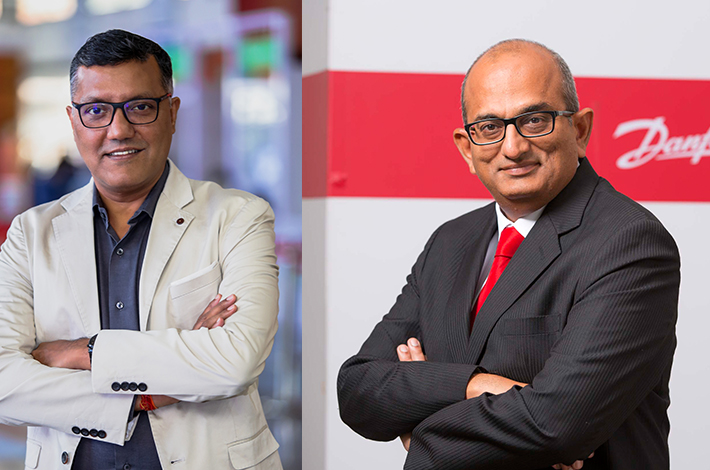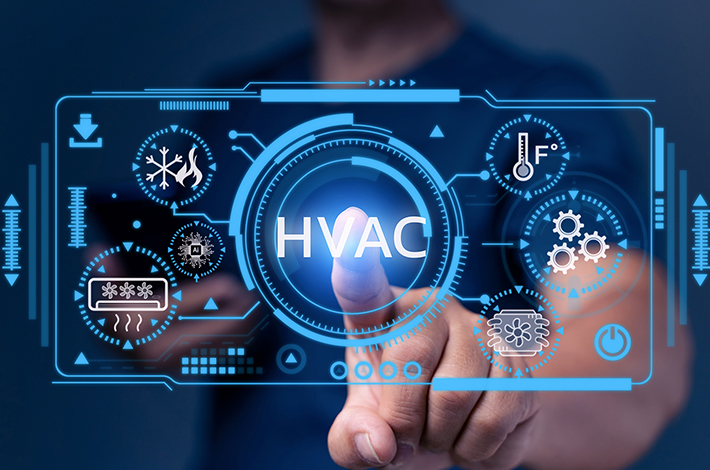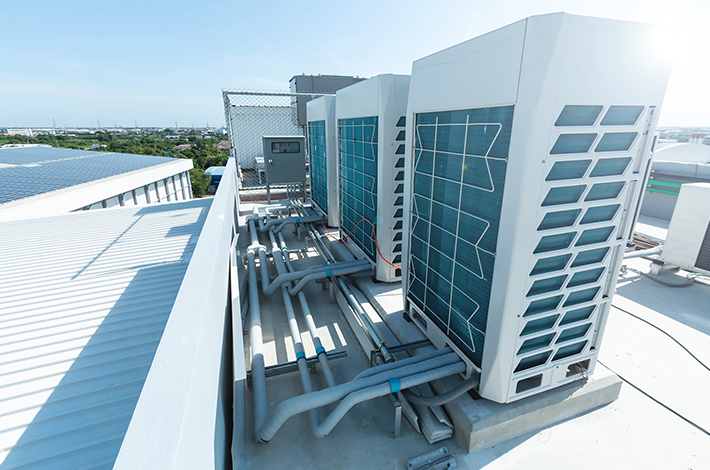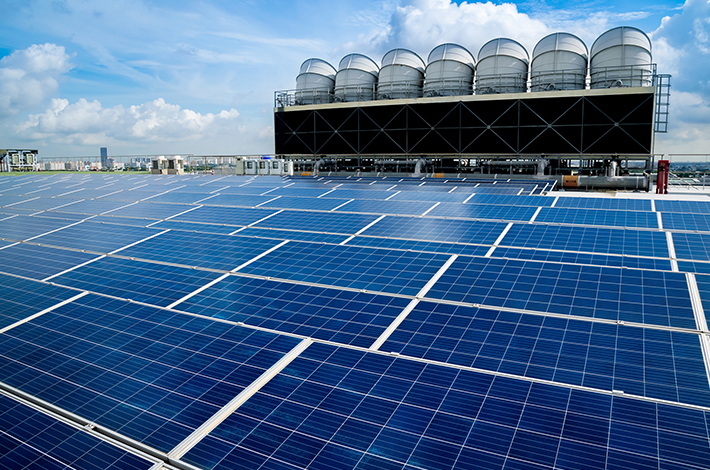29 April 2024
Key-Note
The Mercurial Rise of HVAC Smart Solutions

The expansion of infrastructure and construction projects and government’s increased budget allowance on infrastructure spells sunny times for the HVAC sector.
The industry is under transition and factors like energy efficiency, AI, smart control systems and foray into other sectors are reshaping the trends and practices. Challenges like climate change regulations, better comfort levels, newer demands for energy efficiency, keeping costs competitive are the current drivers for developments in HVACR systems.
Excerpts from an engaging conversation between Mr Yogesh Mudras, Managing Director, Informa Markets in India and Mr. Ravi Purushothaman, Director, Danfoss India

YM: With the government's recent budget of Rs 11.11 lakh crore for infrastructure, the future of the HVAC sector looks exciting and poised for more growth. As an industry leader how do you see the job prospects with this positive development?
RP: Given the escalating climate change challenges faced across India and the surging demand for air conditioning and refrigeration solutions in our rapidly expanding cities, the HVACR sector is projected to witness exponential growth, potentially reaching a scale ten times larger by 2030. Between 2024 and 2028, estimates suggest a robust CAGR of 10.77% for the sector reflecting its burgeoning potential.
This growth trajectory is expected to open a multitude of job opportunities, functions, roles and skill levels. The demand for air conditioning and refrigeration technicians is expected to increase significantly, necessitating a corresponding surge in skilled labourers across production & service level technicians. There will also be a heightened demand for trained professionals in green technologies, including engineers specializing in production, research and development, design, sales, and other crucial facets of the organization. This will create opportunities in ancillary sectors, contributing to the overall growth of the green economy. Hence the current budget outlay comes at an opportune moment for this sunrise sector.
In this sector, we are enthusiastic about our role in driving this growth momentum and contributing to the nation's infrastructure development. We are unwavering in our commitment to investing in industry-academia partnerships, talent acquisition, retention & development initiatives, comprehensive training capacity-building programmes, and ongoing DEI endeavours to ensure that we cultivate a skilled workforce equipped to meet the evolving demands of the future.
As the industry progresses towards greater innovation and sustainability, we anticipate a growing demand for sustainability professionals adept in energy efficiency, renewable, green & smart technologies, AI & digitization solutions, etc. reflecting our steadfast dedication to advancing this sector, aligning with India's broader ‘Make in India’ agenda.

YM: In an awakened world, largely conscious of minimising carbon and promoting green technologies, what do you think are the new innovations and sustainability strategies that should be adopted more to meet local and global requirements?
RP: Danfoss, both globally and in India, focuses on decarbonisation, DEI and circularity initiatives to meet our sustainability targets of the near future. A core aspect of our decarbonization strategy is energy efficiency, which has the potential to achieve over 40% of our carbon reduction goals. For this, we employ a comprehensive three-step approach: Reduce, Reuse, Re-source which has helped our Nordborg campus already become carbon neutral, as of Dec 2022, in scope 1 & scope 2 emissions, ahead of a 2030 target. For circularity, we embrace the principles of Rethink, Recirculate, and Recycle, ensuring optimal resource utilization and waste minimization.
For sustainability requirements, key strategies include investing in renewable energy technologies and integrating them seamlessly into operations expedites the transition to cleaner energy solutions. It also involves developing energy-efficient products enables customers to reduce energy consumption, combat climate change, and conserve resources. Next is adoption of Circular Economy Principles by prioritizing product design for longevity, reusability, and recyclability, minimizes waste generation and maximizes resource utilization. Lastly, collaborating with diverse stakeholders drives innovation and sustainability, allowing for holistic solutions to climate change, energy transition, and sustainable development challenges.
YM: What are the challenges you have observed in retrofitting the old systems to new ones for energy efficiency here in India?
RP: Retrofitting old systems for energy efficiency in India faces challenges due to aging infrastructure and technical limitations. Many commercial and industrial buildings lack support for modern energy-efficient technologies, requiring meticulous evaluation and costly modifications.
A pervasive lack of awareness among stakeholders about the benefits of energy-efficient retrofit is a challenge. This ignorance often translates into resistance to change and reluctance to invest in upgrades, particularly among smaller entities with constrained resources.
The upfront costs associated with retrofitting pose another substantial challenge, particularly in markets sensitive to pricing dynamics. Despite the long-term cost efficiencies promised by energy-efficient technologies, the initial capital outlay required for retrofitting may dissuade certain businesses from pursuing such endeavours address this, stakeholders need to focus on education, collaboration, and strategic planning to unlock the potential for energy savings and sustainability in India's retrofitting landscape.

YM: How significant a strategy is it for you to attend trade exhibitions for improving and expanding your business?
RP: Attending international exhibitions such as the ACREX holds immense significance for us, offering myriad opportunities to enhance and expand our business. Business networking opportunities allow connecting with industry peers, partners, and customers globally, fostering collaborations and new business ventures.
It helps in benchmarking, since one can engage with peers and competitors that allow gauging of industry trends, emerging technologies, and best practices, keeping us ahead of the curve. Trade events allow knowledge exchange, learning from industry leaders and sharing our expertise in innovative solutions. Also, these meets facilitate direct engagement with customers and enables us to understand their needs and showcase our high-quality, reliable, and innovative solutions.
For instance, Danfoss collaborates with ISHRAE and Informa Markets in India for the ACREX Hall of Fame, a prestigious platform recognizing excellence in HVAC. Through this partnership, we contribute to promoting efficient and innovative building designs, systems, and technologies, while also reinforcing our commitment to advancing India's economic and environmental future.
YM: What is your company's approach towards IoT integration, and energy efficiency solutions?
RP: At Danfoss India, we're harnessing the transformative power of IoT technology to reshape how industries interact with HVAC, refrigeration, and industrial automation systems. Through seamless integration, our IoT-enabled solutions offer real-time monitoring, control, and optimization, driving efficiency, reliability, and sustainability.
Our approach focuses on three key pillars - connectivity, data analytics, and automation. Leveraging advanced sensors, actuators, and cloud-based platforms, we provide remote monitoring and predictive maintenance insights. Machine learning algorithms analyse data to empower informed decision-making, boosting efficiency and cost savings.
We are developing innovative solutions that enable our customers to significantly reduce energy consumption, cut operating costs, and mitigate environmental impact. From state-of-the-art variable speed drives and energy-efficient motors to cutting-edge control algorithms and system optimization strategies, our comprehensive portfolio is tailored to enhance performance and sustainability across a wide range of operations. We are not just embracing IoT, we're shaping a smarter, greener future.
YM: What is your thought on Renewable Power Cooling systems such as solar cooling systems which are increasingly gaining significance.
RP: Solar cooling systems offer a compelling solution in the pursuit of sustainable cooling solutions. By harnessing the inexhaustible power of the sun, these systems offer a transformative pathway towards a cleaner, greener future.
Their ability to reduce reliance on traditional energy sources not only mitigates climate change but also contributes to a more sustainable energy mix. Solar cooling systems can enhance energy resilience, especially in regions with limited electricity access, by utilizing decentralized solar power generation and energy storage technologies.
Beyond environmental benefits, they drive innovation and technological progress, promising increased efficiency and scalability. We are committed to advancing renewable power cooling systems like solar cooling through collaboration with industry partners, government agencies, and stakeholders to drive innovation, education, and advocacy for policies and initiatives that facilitate the widespread adoption of renewable energy technologies within the cooling sector. By harnessing solar energy to cool our built environments, we can pave the way for a cleaner, greener world.

YM: You have been at the helm of affairs in your organisation for over a decade now. What has been your leadership mantra?
My leadership mantra revolves around "Innovate, Empower, Collaborate," in line with our organizational mantra of being proactive, relevant, and environmentally conscious. These principles are deeply intertwined with Danfoss's vision of being the preferred decarbonization partner.
To Innovate, we prioritize innovation to drive sustainable growth, developing cutting-edge solutions that align with our vision of decarbonization. By leveraging our expertise in energy-efficient technologies, we contribute to reducing carbon emissions across industries and sectors.
By empowering our employees fosters a culture of ownership and enables them to drive initiatives aimed at decarbonization. Through training and development programs, we equip our workforce with the skills and knowledge necessary to lead the transition to a low-carbon future.
Finally, collaboration with stakeholders is crucial in achieving our vision of decarbonization. By partnering with customers, suppliers, and industry peers, we co-create solutions that accelerate the adoption of renewable energy sources and promote energy efficiency, thereby reducing carbon footprints collectively.